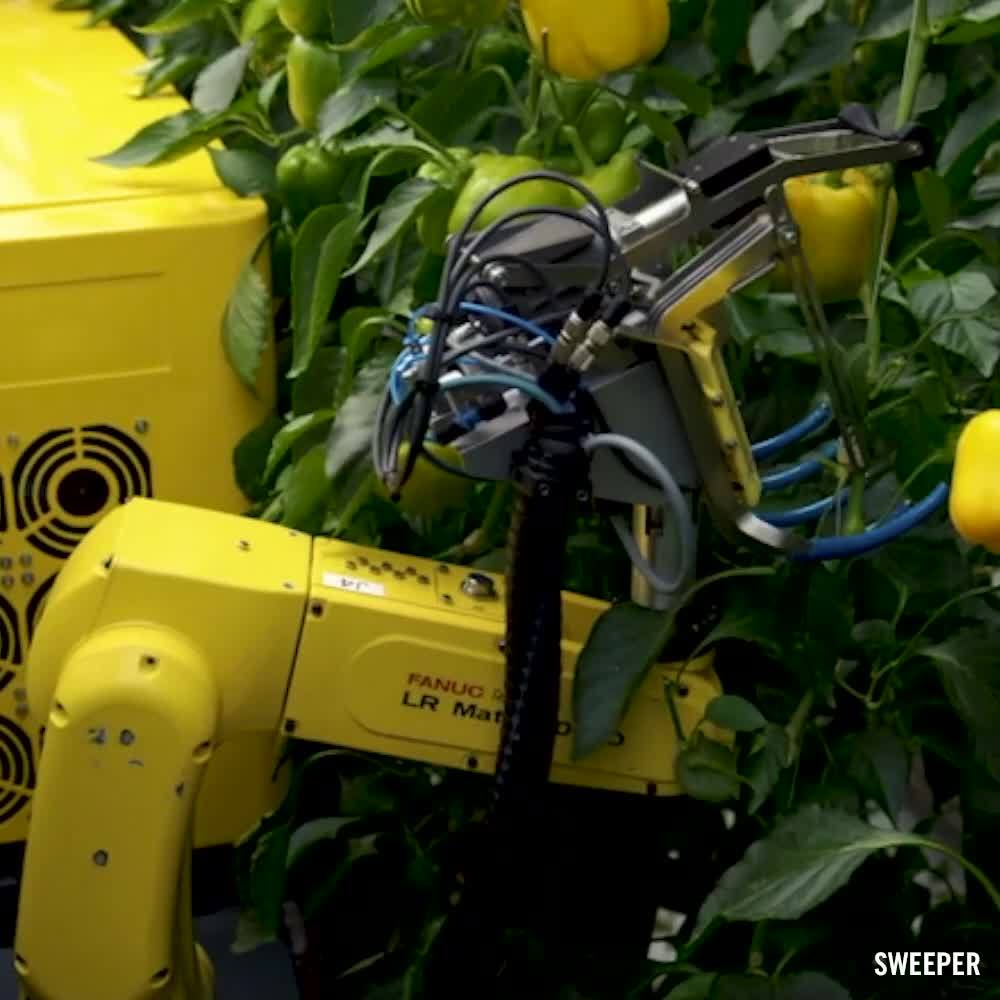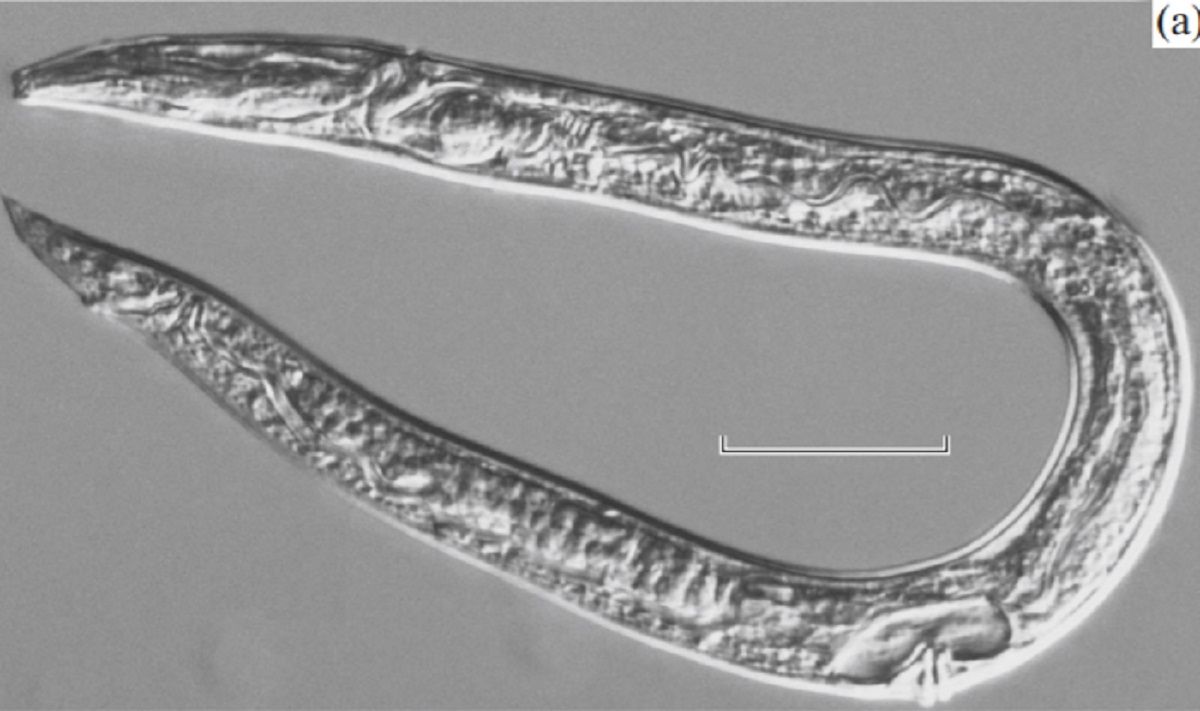Archive for the ‘food’ category: Page 263
Jul 27, 2018
Siberian Worms Frozen In Permafrost For Up To 42,000 Years Defrosted Back To Life
Posted by Matthew White in category: food
After tens of thousands of years of being trapped in Siberian permafrost, two female nematodes were successfully defrosted. Researchers say they are showing signs of life, moving and eating.
Jul 26, 2018
Sony Wants Your Next Smartphone to Have a 48MP Camera
Posted by Shailesh Prasad in categories: computing, food, mobile phones
By providing an ultra-high native resolution chip with built-in binning of pixels, Sony hopes to let smartphone users have their cake and eat it too — both amazing detail and good low-light performance.
Jul 25, 2018
Chicken plastic and wine leather – giving waste new life
Posted by Bill Kemp in categories: food, sustainability
A fashion collection made from the remains of grapes from the wine industry and plastic made from chicken feathers are two new twists on the practice of making new products from waste, and a growing demand for sustainability from consumers mean there could be a ready market for this type of innovation.
Food waste isn’t just the result of groceries that have gone off or uneaten meals. As food is processed for consumption, huge amounts of waste are generated. The European poultry industry, for example, generated about 3.1 million tons of discarded feathers in 2014. And during wine production, around 25% of the weight of grapes, such as the skins and seeds, are wasted.
These byproducts could soon be given a second life, as scientists work out how to transform them into new materials.
Jul 23, 2018
Tesla Model 3 Has Highest Profit Margin of Any Electric Vehicle
Posted by Shailesh Prasad in categories: engineering, food, sustainability

The engineering firm Munro & Associates made waves recently when it tore the new Tesla Model 3 apart both literally and figuratively. The company dismantles and studies cars and other products, and CEO Sandy Munro was very vocal about his feelings regarding Tesla’s newest electric vehicle. He said the build quality was like a Kia from the 90s. Now, the company has completed its analysis. While Munro’s opinion on the fit and finish hasn’t changed, he has expressed downright shock that the Model 3 is highly profitable for Tesla.
The initial Munro & Associates analysis of the Model 3 called out issues like clunky door handles and windows that bounce around inside the door panels. The exterior panels of the Model 3 also drew Munro’s ire. The gaps are substantially larger than the more expensive Teslas — even conventional cars that cost thousands less look more polished on the outside, according to Munro.
Continue reading “Tesla Model 3 Has Highest Profit Margin of Any Electric Vehicle” »
Jul 23, 2018
This Drug Combo Extends Lifespan and Healthspan in Mice
Posted by Shailesh Prasad in categories: biotech/medical, food, life extension
Aging may seem like the most natural—and inevitable—thing in life. Yet according to a new study in Nature Medicine, rejuvenating an aging body may be as easy as kitchen renovations. Simply swap drill and hammer for a cocktail of two drugs already on the market; rather than pulling out decrepit cabinets, kill off aged “zombie” cells.
These so-called senescent cells are a curious oddity: they’re frail, beat-up, and unable to perform their usual roles. Yet they simply refuse to die. What’s more, zombie cells actively leak inflammatory chemicals into their surroundings, damaging nearby tissue and—in a sense—“spreading” the negative effects of aging.
Yet because they’re extremely rare, amounting to only eight percent of the body’s cells at most, scientists have long wondered just how much they contribute to the aging process.
Continue reading “This Drug Combo Extends Lifespan and Healthspan in Mice” »
Jul 23, 2018
Yanmar’s robotic tractors bring autonomous vehicles out to farm
Posted by Dan Kummer in categories: food, robotics/AI, sustainability
We’ve had autonomous cars, autonomous trucks, and autonomous buses, and now Osaka-based diesel engine manufacturer Yanmar is introducing a new line of robotic tractors. On October 1, 2018, the company is releasing its 2-series tractors equipped with the Smartpilot autonomous operating system and Information and Communications Technology (ICT) that allow them to operate in autonomous and semi-autonomous modes.
Jul 23, 2018
Material formed from crab shells and trees could replace flexible plastic packaging
Posted by Bill Kemp in categories: chemistry, engineering, food, sustainability
From liquid laundry detergent packaged in cardboard to compostable plastic cups, consumer products these days are increasingly touting their sustainable and renewable origins.
Now researchers at Georgia Institute of Technology have created a material derived from crab shells and tree fibers that has the potential to replace the flexible plastic packaging used to keep food fresh.
The new material, which is described July 23 in the journal ACS Sustainable Chemistry and Engineering, is made by spraying multiple layers of chitin from crab shells and cellulose from trees to form a flexible film similar to plastic packaging film.
Jul 22, 2018
2018 Speakers
Posted by Zoltan Istvan in categories: bioengineering, biotech/medical, food, genetics, robotics/AI, transhumanism
I’m excited to share I’ll be speaking/debating at the upcoming #Biohack the Planet 2018 conference in Oakland on Aug 31 & Sept 1. Many interesting biohackers will be there. Tickets are still available and very reasonably priced right now, but they will likely sell out. Hope to see you there! Here’s the speaker list: http://biohacktheplanet.com/2018-speakers/ #transhumanism #biohacker & ticket page: https://www.eventbrite.com/e/biohack-the-planet-2018-ticket…
Bryan Johnson is the founder and CEO of Kernel, OS Fund and Braintree.
In 2016, Bryan invested $100M in Kernel to build advanced neural interfaces to treat disease and dysfunction, illuminate the mechanisms of intelligence, and extend cognition. Kernel is on a mission to dramatically increase our quality of life as healthy lifespans extend. He believes that the future of humanity will be defined by the combination of human and artificial intelligence (HI +AI). In 2014, Bryan invested $100M to start OS Fund which invests in entrepreneurs commercializing breakthrough discoveries in genomics, synthetic biology, artificial intelligence, precision automation, and new materials development. Bryan founded Braintree in 2007, later acquiring Venmo, which he sold to Ebay in 2013 for $800M. He is an outdoor-adventure enthusiast, pilot, and author of a children’s book, Code 7.
Jul 22, 2018
Traces of the Fukushima Meltdown Can Be Found in California Wines
Posted by Genevieve Klien in categories: food, particle physics
Researchers found increased levels of radioactive particles in wines made after Japan’s Fukushima meltdown.
















